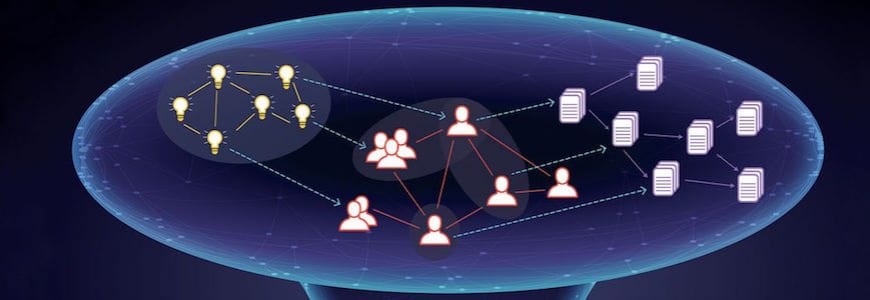By Rob Mitchum // March 5, 2018
The application of scientific techniques to the process of science itself — a field known as the “science of science” or SciSci — reveals patterns that can be used to fuel more efficient and faster discoveries. In a new paper for Science, a team of authors including Knowledge Lab director and CI Senior Fellow James Evans reviews recent SciSci achievements and discusses how researchers, funding agencies, universities, and other entities can apply the findings to drive innovation and progress.
Like many fields, an influx of data and techniques such as machine learning, network theory, and text mining have unlocked broad new studies of scientific practice. Datasets with millions of journal articles, patents, and other scientific texts allow researchers to quantitatively analyze theories and assumptions about the creation of science, such as the influence of author reputation or collaborations on citation rate, the magnitude of gender inequality in science, and the tradeoffs of pursuing risky or safe hypotheses.
The review highlights multiple studies by Knowledge Lab and their affiliated Metaknowledge Network on the factors that influence scientific discovery. A 2015 paper led by Feng Shi constructed a hypergraph network of authors, diseases, methods, and chemicals from nearly 20 million articles to depict the “fabric of science” and model how scientists choose their experimental targets and approaches. Another 2015 Knowledge Lab paper, led by Jacob Foster, found that more innovative research was rewarded with higher citation rates and prestigious awards, but that institutional pressures incentivized safer, less impactful research. More recently, a 2017 working paper led by Lingfei Wu examined how the size of scientific teams affects the impact of a scientific study.
Eventually, the authors hope that such studies will help drive new policy and funding practices that encourage innovative research — “It would benefit science if curiosity, creativity, and intellectual exchange — particularly regarding the societal implications and applications of science and technology — are better appreciated and incentivized in the future.” They also highlight the potential of machine learning and artificial intelligence to serve as “machine collaborators” in helping scientists choose the most productive hypotheses to pursue.
“These questions promise to help us understand the science of the future,” they conclude.

